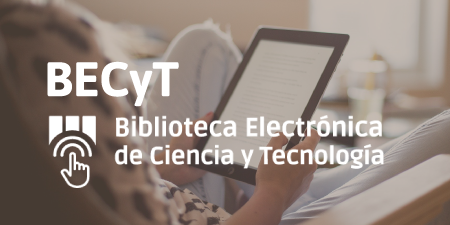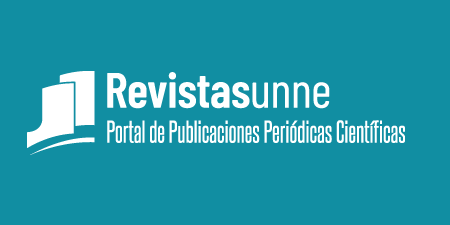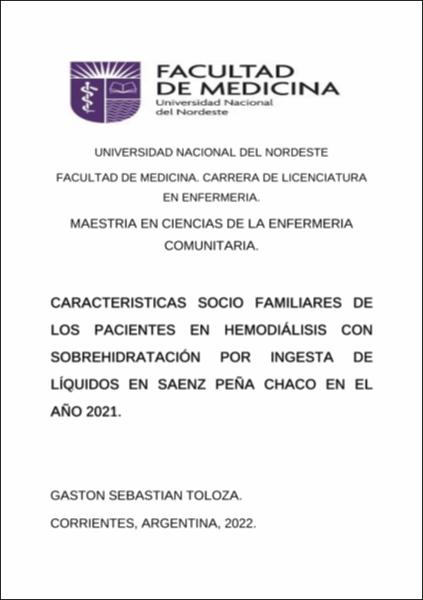Mostrar el registro sencillo del ítem
Características socio familiares de los pacientes en hemodiálisis con sobrehidratación por ingesta de líquidos en Sáenz Peña Chaco en el año 2021
| dc.contributor.advisor | Ramírez, Liliana | |
| dc.contributor.advisor | Auchter, Mónica Cristina | |
| dc.contributor.advisor | Gómez, Fernando | |
| dc.contributor.advisor | Gutiérrez Raina, Daniel Ernesto | |
| dc.contributor.advisor | García, Silvia Josefa | |
| dc.contributor.author | Toloza, Gastón Sebastián | |
| dc.date.accessioned | 2023-08-29T12:08:34Z | |
| dc.date.available | 2023-08-29T12:08:34Z | |
| dc.date.issued | 2022 | |
| dc.identifier.citation | Toloza, Gastón Sebastián, 2022. Características socio familiares de los pacientes en hemodiálisis con sobrehidratación por ingesta de líquidos en Sáenz Peña Chaco en el año 2021. Tesis de Maestría. Corrientes: Universidad Nacional del Nordeste. Facultad de Medicina. | es |
| dc.identifier.uri | http://repositorio.unne.edu.ar/handle/123456789/52285 | |
| dc.description.abstract | Según la Organización Mundial de la Salud (OMS) define familia como “los miembros del hogar emparentados entre sí, hasta un grado determinado de sangre, adopción o matrimonio” (1). Los miembros de las familias pertenecen a un sistema específico, a una unidad social en que los roles y patrones de conducta son mutuamente regulados por normas compartidas y en la que el control social, se ejerce mediante la imposición de ciertos tipos de sanciones y la distribución de recompensas. La familia es una institución, un subsistema dentro del sistema mayor que es la sociedad, es un grupo de personas entrelazadas, cuyos vínculos se basan en relaciones de parentesco fundados en lazos biológicos y sociales con funciones específicas para cada uno de sus miembros y con una función más o menos determinada en un sistema social. En los últimos tiempos un movimiento ha revolucionado la forma de entender y atender la familia, la terapia familiar sistémica ha planteado una forma diferente de atención a la familia, no como el paciente y su situación de primero y luego la familia a la que pertenece, si no por el contrario la situación del paciente en el contexto relacional y su vínculo dentro de un sistema familiar, a la cual pertenece. Plantea a la familia como un todo, y las interacciones de sus partes, conforman ese todo, que es más que la suma de sus partes, es vista como un sistema auto organizado, en el cual todos los elementos se vinculan entre sí y cuyo problema actual cumple una función específica para el sistema familiar (2). Dentro de la familia, es de gran importancia determinar la tipología familiar con relación al parentesco, ya que es un vínculo de consanguinidad, afinidad, adopción, matrimonio, u otra relación estable de afectividad análoga a ésta, y es la trascendencia de esta clasificación que se identifica fundamentalmente, en la necesidad del médico familiar de identificar características de los integrantes de las familias, que influyan en el proceso saludenfermedad y cuya importancia se relacione con las consecuencias propias del parentesco. (3) La principal forma de interacción en el sistema familiar, los miembros de una familia se relacionan de acuerdo a ciertas reglas que constituyen la estructura familiar a la cual define como "el conjunto invisible de demandas funcionales que organizan los modos en que interactúan los miembros de una familia". El modelo de la terapia familiar sistémica primordialmente en la estructural, esta ve a la familia como un sistema que tiende a mantenerse estable ante las influencias intersistémicas y extrasistémicas de un contexto, lo que a veces, favorece cierto desajuste en la estructura, que se visualiza en la figura del paciente identificado. Estos cambios son producidos tanto desde el exterior, como resultado de los continuos movimientos sociales, así como desde el interior, por los cambios evolutivos de sus miembros y por transformaciones estructurales. El modelo plantea, que 5 para que el sistema funcione mejor y el síntoma desaparezca, hay que ajustarlo y atender ciertos principios como, por ejemplo: restablecimiento de jerarquías, límites claros en roles, alianzas, coaliciones, relaciones y funciones, los cuales son componentes centrales de la estructura y el funcionamiento familiar. Por lo que el sistema familiar se expresa a través de pautas transaccionales cuyo funcionamiento se da con base en reglas acerca de quiénes son los que actúan, con quién y de qué forma. Consecuentemente la familia se va adaptando a circunstancias cambiantes, cuando no cuenta con los elementos para el cambio y la adaptación, puede desarrollar mecanismos homeostáticos para contrarrestar las dificultades para aceptar cambios. Cuando se trabaja con una familia, la mayoría de las veces sorprende por sus capacidades de autorregulación y crecimiento para el cambio, que es esa capacidad del sistema familiar de crecer y fortalecerse, es por esta razón que el trabajo con familias desde la parte socioeducativa es un reto para la orientación familiar y una oportunidad de crecimiento y aprendizaje para las familias (4). Un sistema familiar que opera dentro de contextos sociales específicos tiene tres características: (5) • La estructura de la familia es la de un sistema sociocultural abierto en proceso de transformación. • La familia muestra un desarrollo desplazándose a través de un cierto número de etapas que exigen reestructuraciones. • La familia se adapta a las circunstancias cambiantes de modo tal que se mantiene una continuidad y fomenta el crecimiento psicosocial de cada miembro. La salud familiar es considerada un proceso único e irrepetible que se caracteriza por no ser la suma de la salud individual de sus miembros, y por tener un origen multicausal, todo hay que tener en cuenta para su análisis, tampoco se puede considerar la salud familiar como un estado estático, sino que está sometido a un proceso de transformación y cambio donde influyen significativamente las crisis o eventos que atraviesa; donde además juegan un papel fundamental para el restablecimiento de su equilibrio, los recursos adaptativos de la familia, su forma de enfrentamiento a los conflictos y al acceso a las redes de apoyo social. La salud familiar puede considerarse como el ajuste o equilibrio entre los elementos internos y externos del grupo familiar. Con respecto a las familias, en la etapa crónica de las enfermedades, se produce una reorganización dentro de los roles familiares; las funciones que desempeñaba el enfermo se redistribuyen en el resto de la familia, como ocurre en la enfermedad renal crónica, que es 6 un problema de salud pública a nivel mundial, que tiene prevalencia e incidencia creciente con altos costos y mala evolución en sus pacientes. Los pacientes en hemodiálisis presentan una dependencia a sus familiares por lo que en alguno de los miembros de la familia puede representar un serio problema, si no se encuentran contenidas emocionalmente. La relación paciente familia, permite predecir la tolerancia y calidad del tratamiento que el paciente va a obtener. Una mala relación familiar interfiere también en el éxito del tratamiento dialítico, está demostrada la importancia de la calidad del entorno familiar, la capacidad de tolerar el estrés, de asumir responsabilidades, de entrega hacia el paciente, de comprender sus necesidades, constituyen premisas para el éxito del tratamiento. Por ello se realiza este estudio de investigación denominado características socio familiares de los pacientes en hemodiálisis con sobrehidratación por ingesta de líquidos; del cual: El objetivo general del estudio es: describir las características socio familiares de los pacientes en hemodiálisis con sobrehidratación por ingesta de líquidos en Saenz Peña Chaco en el año 2021. Los objetivos específicos serán: a) Identificar características sociodemográficas de los pacientes en hemodiálisis con sobre hidratación por ingesta de líquidos en Saenz Peña Chaco en el año 2021 como: edad, sexo, grado de instrucción, situación laboral, estado civil, lugar de origen. b) Determinar la tipología familiar con base en el parentesco de los pacientes en hemodiálisis con sobrehidratación por ingesta de líquidos en Saenz Peña Chaco en el año 2021 como ser: con parentesco, sin parentesco. c) Identificar la estructura familiar de los pacientes en hemodiálisis con sobrehidratación por ingesta de líquidos en Saenz Peña Chaco en el año 2021: límites, jerarquía, centralidad, periferia, alianzas, coaliciones, y relaciones. Esta investigación se trata de un estudio no experimental u observacional, de tipo descriptivo, transversal, y cuantitativo. Su población está integrada por todos los pacientes con tratamientos de hemodiálisis, de un centro de hemodiálisis en Saenz Peña Chaco, y la unidad de análisis son cada uno de los pacientes en tratamientos de hemodiálisis, y que presenten sobrehidratación por ingesta de líquidos, en el año 2021, y formen parte del criterio de inclusión; el tipo de muestreo será probabilístico aleatorio simple: porque cada paciente sobrehidratado, tendrá la probabilidad equitativa de ser incluidos en una muestra. Con respecto a los resultados: 7 __Con respecto a los datos sociodemográficos, se establece: en relación a la edad que el grupo etario con mayor porcentaje es de 36-45 años con un 26,2%, en relación al sexo son los masculinos con un 54,8%, en cuanto al grado de instrucción predominan los de secundaria incompleta con un 26,2%, respecto a la situación laboral existen en mayor cantidad los pensionados con un 26,2% evidentemente por su incapacidad renal, en el estado civil el concubinato con un 54,8%, y relacionado al lugar de origen en un mayor porcentaje son provenientes de Saenz Peña Chaco, con un 33,3% son de esta ciudad. __Los datos obtenidos, en cuanto a la tipología familiar en relación al parentesco, se observa: en un mayor porcentaje a la familia con parentesco la de tipo nuclear simple con un 42,9%, y con respecto a la tipología familiar sin parentesco de igual manera con un 2,4% a la no monoparental extendida sin parentesco y no grupos similares a familiares. __con respecto a los datos obtenidos en la estructura familiar de los pacientes en hemodiálisis con sobrehidratación por ingesta de líquidos, son las siguientes: los límites son claros en un mayor porcentaje con el 61,9%, la jerarquía es presente con un 83,3%, la centralidad predomina positivas con 66,7%, periferias ausentes con un 69%, alianzas con beneficio en un 90,5%, coaliciones encubiertas un 83,3%, y las relaciones son estrechas en un 40,5%. Recomendaciones: se propone que continúen estudios de investigaciones relacionados con esta problemática, así reforzar adaptaciones y habilidades tanto de los pacientes con sobre hidratación por ingesta de líquidos, sus familias y la sociedad, con la finalidad de construir relaciones funcionales y satisfactorias, productivamente positivas. Además, seguir trabajando con el equipo de enfermería y demás equipo interdisciplinario para detectar los problemas de los pacientes y familiares relacionadas a características socio familiares, a fin de que ellos tomen conciencia, valoren la importancia del cuidado de su salud, y así logren una mejor calidad de vida, ya que la enfermedad renal crónica, provoca un desequilibrio tanto en el paciente como la familia. Por último, concientizar al equipo de salud, que debe reconocer que su mayor interés no es la enfermedad, sino la salud, la influencia del ambiente en la salud debe ser aprendida y la familia es la principal fuente y objeto de instrucción de la misma, por lo que es importante estudiar su entorno y los factores de riesgo que ocurren en su núcleo familiar con la finalidad de prevenir y limitar las disfunciones que se pudieran generar. En conclusión que de acuerdo a las características socio familiares que presentaron los pacientes en hemodiálisis con sobrehidratación por ingesta de líquidos, se relacionaron con los objetivos, y la hipótesis se ha corroborado solo en un porcentaje. Además, es 8 destacable resaltar que los pacientes se sienten satisfechos en sus relaciones familiares y que han adecuado en gran manera el hecho de modificar su estilo de vida para sobrellevar de manera más satisfactoria tanto las sesiones de hemodiálisis como las actividades de sus vidas fuera del servicio. En general, se observó que se sienten contenidos, apoyados, acompañados, amados y protegidos por sus familiares. Y como se mencionó al principio de este trabajo, en nuestras manos está intentar prevenir esta situación, haciendo al conjunto familiar consciente de ella y prestando ayuda en la búsqueda de los apoyos necesarios tanto a los pacientes con sobrehidratación por ingesta de líquidos, y así también a la familia. | es |
| dc.description.abstract | According to the World Health Organization (WHO) defines family as "the members of the household related to each other, up to a certain degree of blood, adoption or marriage" (1). Family members belong to a specific system, to a social unit in which roles and patterns of behavior are mutually regulated by shared norms and in which social control is exercised through the imposition of certain types of sanctions and the distribution of rewards. The family is an institution, a subsystem within the larger system that is society, it is a group of intertwined people, whose links are based on kinship relationships based on biological and social ties with specific functions for each of its members and with a more or less determined function in a social system. In recent times a movement has revolutionized the way of understanding and caring for the family, systemic family therapy has proposed a different way of caring for the family, not as the patient and his situation first and then the family to which he belongs, if not, on the contrary, the patient's situation in the relational context and his link within a family system, to which he belongs. It raises the family as a whole, and the interactions of its parts make up that whole, which is more than the sum of its parts, it is seen as a self-organized system, in which all the elements are linked to each other and whose problem current fulfills a specific function for the family system (2). Within the family, it is of great importance to determine the family typology in relation to kinship, since it is a link of consanguinity, affinity, adoption, marriage, or another stable emotional relationship analogous to this one, and it is the significance of this classification that It is fundamentally identified in the need for the family doctor to identify characteristics of family members that influence the health-disease process and whose importance is related to the consequences of kinship. (2) The main form of interaction in the family system, the members of a family are related according to certain rules that constitute the family structure, which he defines as "the 9 invisible set of functional demands that organize the ways in which the members of a family interact. family". The systemic family therapy model, primarily structural, sees the family as a system that tends to remain stable in the face of the intersystemic and extrasystemic influences of a context, which sometimes favors a certain maladjustment in the structure, which is visualized in the figure of the identified patient. These changes are produced both from the outside, as a result of the continuous social movements, as well as from the inside, by the evolutionary changes of its members and by structural transformations. The model proposes that for the system to work better and the symptom disappears, it must be adjusted and certain principles must be addressed, such as: reestablishment of hierarchies, clear limits on roles, alliances, coalitions, relationships and functions, which are central components. of family structure and functioning. Therefore, the family system is expressed through transactional guidelines whose operation is based on rules about who are those who act, with whom and in what way. Consequently, the family adapts to changing circumstances, when it does not have the elements for change and adaptation can develop homeostatic mechanisms to counteract the difficulties to accept changes. When working with a family, most of the time, it surprises with its capacities for self-regulation and growth for change, which is the capacity of the family system to grow and become stronger, it is for this reason that working with families from the socio-educational side is a challenge for family counseling and an opportunity for growth and learning for families (3). A family system that operates within specific social contexts has three characteristics: (4) • The structure of the family is that of an open sociocultural system in the process of transformation. • The family shows a development moving through a certain number of stages that require restructuring. • The family adapts to changing circumstances in such a way that continuity is maintained and fosters the psychosocial growth of each member. Family health is considered a unique and unrepeatable process that is characterized by not being the sum of the individual health of its members, and by having a multi-causal origin, everything must be taken into account for its analysis, nor can family health be considered as a static state, but is subjected to a process of transformation and change where the crises or events that the family goes through significantly influence; where they also play a fundamental role in restoring their balance, the adaptive resources of the family, their way of 10 coping with conflicts and access to social support networks. Family health can be considered as the adjustment or balance between the internal and external elements of the family group. With regard to families, in the chronic stage of diseases, a reorganization occurs within family roles; The functions performed by the patient are redistributed in the rest of the family, as occurs in chronic kidney disease, which is a public health problem worldwide, which has an increasing prevalence and incidence with high costs and poor evolution in its patients. Hemodialysis patients have a dependence on their relatives, so that in some of the family members it can represent a serious problem, if they are not emotionally contained. The patient-family relationship makes it possible to predict the tolerance and quality of the treatment that the patient will obtain. A bad family relationship also interferes with the success of dialysis treatment. The importance of the quality of the family environment, the ability to tolerate stress, to assume responsibilities, to dedicate ourselves to the patient, to understand their needs, are the premises for the success of the treatment. For this reason, this research study called socio-family characteristics of hemodialysis patients with overhydration due to fluid intake is carried out; which one: The general objective of the study is: to describe the socio-family characteristics of hemodialysis patients with overhydration due to fluid intake. The specific objectives will be: a) -Identify sociodemographic characteristics of patients on hemodialysis with overhydration due to fluid intake in Saenz Peña Chaco in 2021 such as: age, sex, educational level, employment status, marital status, place of origin. b) -Determine the family typology based on the relationship of patients on hemodialysis with overhydration due to fluid intake in Saenz Peña Chaco in the year 2021, such as: related, unrelated. c) -Identify the family structure of patients on hemodialysis with overhydration due to fluid intake in Saenz Peña Chaco in the year 2021: limits, hierarchy, centrality, periphery, alliances, coalitions, and relationships. This research is a non-experimental or observational study, descriptive, cross-sectional, and quantitative. Its population is made up of all patients undergoing hemodialysis treatments, from a hemodialysis center in Saenz Peña Chaco, and the analysis unit is each of the patients undergoing hemodialysis treatments, and who present overhydration due to 11 ingestion of liquids, in the year 2021, and form part of the inclusion criteria; the type of sampling will be simple random probabilistic: because each overhydrated patient will have an equal probability of being included in a sample. Regarding the results: __Regarding the sociodemographic data, it is established: in relation to age that the age group with the highest percentage is 36-45 years with 26.2%, in relation to sex they are male with 54.8%, in Regarding the level of education, those with incomplete secondary education predominate with 26.2%, with respect to the employment situation, there are a greater number of pensioners with 26.2%, obviously due to their renal incapacity, in marital status, concubinage with 54, 8%, and related to the place of origin in a greater percentage are from Saenz Peña Chaco, with 33.3% are from this city. __The data obtained, regarding the family typology in relation to kinship, it is observed: in a higher percentage to the family with kinship the simple nuclear type with 42.9%, and with respect to the family typology without equal kinship way with 2.4% to the extended nonsingle parent without kinship and not family-like groups. __Regarding the data obtained in the family structure of patients on hemodialysis with overhydration due to fluid intake, they are the following: the limits are clear in a higher percentage with 61.9%, the hierarchy is present with 83.3 %, centrality predominates positive with 66.7%, peripheries absent with 69%, alliances with benefit in 90.5%, covert coalitions in 83.3%, and relationships are close in 40.5%. Recommendations: it is proposed that research studies related to this problem continue, thus reinforcing adaptations and skills of both patients with overhydration due to fluid intake, their families and society, in order to build functional and satisfactory relationships, productively positive. In addition, continue working with the nursing team and other interdisciplinary teams to detect the problems of patients and relatives related to socio-family characteristics, so that they become aware, value the importance of their health care, and thus achieve a better quality of life, since chronic kidney disease causes an imbalance in both the patient and the family. Finally, make the health team aware that they must recognize that their main interest is not the disease, but health, the influence of the environment on health must be learned and the family is the main source and object of instruction for the same, Therefore, it is important to 12 study their environment and the risk factors that occur in their family nucleus in order to prevent and limit the dysfunctions that could be generated. In conclusion, according to the socio-family characteristics presented by patients on hemodialysis with overhydration due to fluid intake, they were related to the objectives, and the hypothesis has only been corroborated in a percentage. In addition, it is noteworthy to highlight that patients feel satisfied in their family relationships and that they have greatly adapted the fact of modifying their lifestyle to cope more satisfactorily with both hemodialysis sessions and the activities of their lives outside the service. . In general, it was observed that they feel contained, supported, accompanied, loved and protected by their relatives. And as mentioned at the beginning of this work, it is in our hands to try to prevent this situation, making the family group aware of it and providing help in the search for the necessary support both for patients with overhydration due to fluid intake, and also to the family. | es |
| dc.format | application/pdf | es |
| dc.format.extent | 107 p. | es |
| dc.language.iso | spa | es |
| dc.publisher | Universidad Nacional del Nordeste. Facultad de Medicina | es |
| dc.rights | openAccess | es |
| dc.rights.uri | http://creativecommons.org/licenses/by-nc-nd/2.5/ar/ | es |
| dc.subject | Hemodiálisis | es |
| dc.subject | Sobrehidratación | es |
| dc.subject | Ingesta de líquidos | es |
| dc.subject | Sáenz Peña (Chaco) | es |
| dc.title | Características socio familiares de los pacientes en hemodiálisis con sobrehidratación por ingesta de líquidos en Sáenz Peña Chaco en el año 2021 | es |
| dc.type | Tesis de maestría | es |
| unne.affiliation | Fil: Toloza, Gastón Sebastián. Universidad Nacional del Nordeste. Facultad de Medicina; Argentina. | es |
| unne.affiliation | Fil: Ramírez, Liliana. Universidad Nacional del Nordeste. Facultad de Medicina; Argentina. | es |
| unne.affiliation | Fil: Auchter, Mónica Cristina. Universidad Nacional del Nordeste. Facultad de Medicina; Argentina. | es |
| unne.affiliation | Fil: Gómez, Fernando. Universidad Nacional del Nordeste. Facultad de Medicina; Argentina. | es |
| unne.affiliation | Fil: Gutiérrez Raina, Daniel Ernesto. Universidad Nacional del Nordeste. Facultad de Medicina; Argentina. | es |
| unne.affiliation | Fil: García, Silvia Josefa. Universidad Nacional del Nordeste. Facultad de Medicina; Argentina. | es |
| unne.description.grado | Maestría en Ciencias de la Enfermería Comunitaria | es |
Ficheros en el ítem
Este ítem aparece en la(s) siguiente(s) colección(ones)
-
Tesis de maestría [54]





